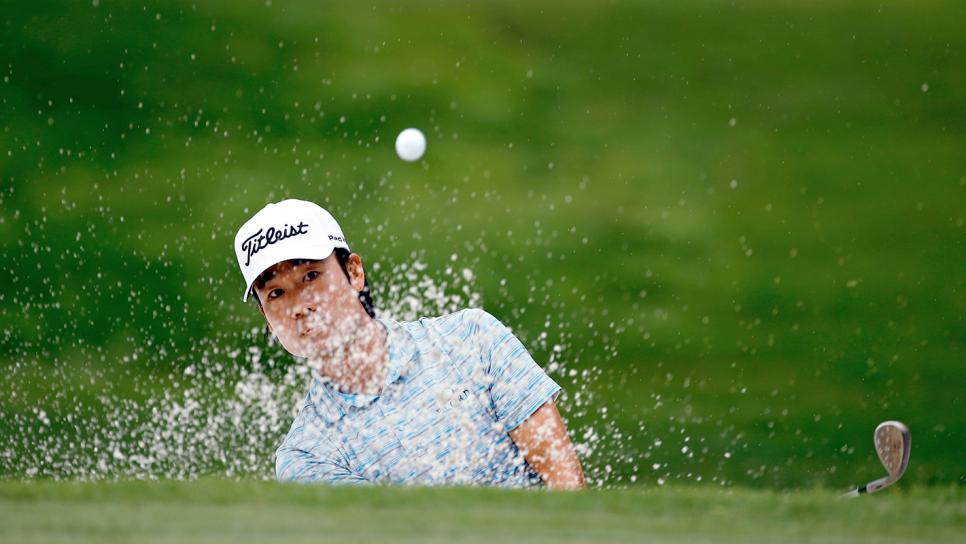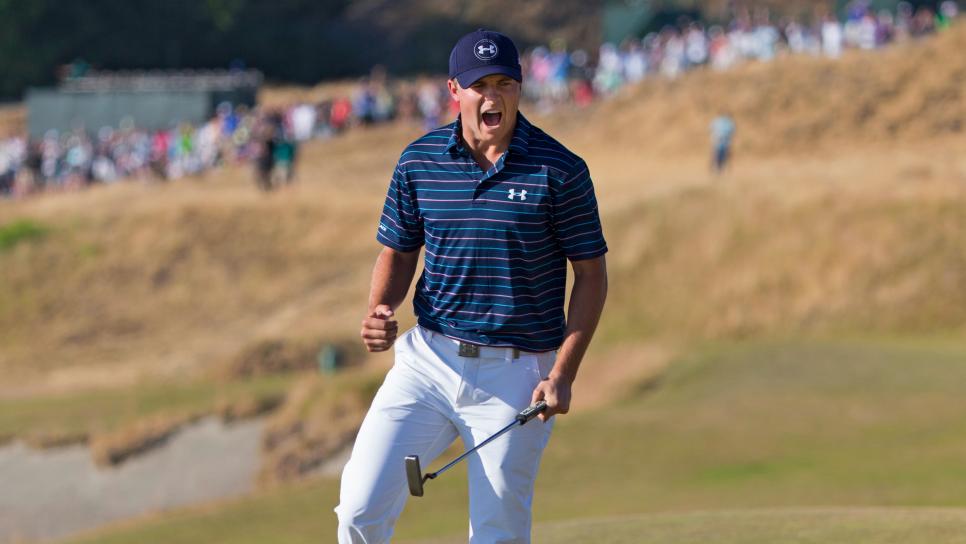It's easy to make some seat-of-the-pants calls on who's the best on the PGA Tour in various categories, such as Jordan Spieth as the best clutch putter or Phil Mickelson as the short-game wizard. But what do the statistics actually say? We commissioned Dean Knuth, who developed the USGA's Course Rating and Slope systems, to calculate combinations of tour stats during the last two seasons. Take putting, for example: Knuth created a four-stat formula and went back to the beginning of 2014. In the end, we wanted to be able to definitively say who ranks as the game's greatest in eight skill areas.
Some of the results won't surprise you, but others are less obvious. Jason Day might hit parabolic bombs off the tee, but he's the best at recovering from trouble, as evidenced by some clutch iron shots from the rough and bunker up-and-downs during recent wins. So then, who is the best driver? Best bunker player?
Best finisher? Read on, and check out their tips. Last thing: We polled 50 PGA Tour players on the same categories. It's interesting to see what the pros think versus what the stats say.

Photo by Michael Dodge/Getty Images
WINNER: ADAM SCOTT
There might be no finer experience at a PGA Tour event than to park yourself behind Adam Scott at the practice tee and watch him make one syrupy swing after another. So it's hard to believe when Scott says he has bad swing days. The possessor of the tour's finest action, as measured by a variety of precision and distance metrics, struggles when his famously smooth swing gets quick at the transition from backswing to downswing. Scott's fix? Visualizing somebody else's swing. "When you really have to slow down, that can be hard to do out on the course," Scott says. "I think of the slowest rhythm I can when I'm out of sequence—[LPGA player] Inbee Park's backswing. Keep thinking about that, and you can start to get control over your rhythm again."
PLAYER PICKS

Photo by Stan Badz / PGA Tour
BEST DRIVER: DUSTIN JOHNSON
Dialing up a cool 350 yards on command is a great starting point for any best-of discussion, but Dustin Johnson wins the driving crown for his combination of length, accuracy and willingness to hit driver in the most pressure-packed situations. We all remember the missed putt that cost D.J. a spot in a U.S. Open playoff last year, but what about the perfect 355-yard laser that left him just a 5-iron into the 600-yard 18th? Johnson says it's a matter of finding your right speed. "Swinging out of control won't help you, but the opposite is just as much of a problem.
If you're standing over a shot and not sure where it's going to go, you're using the wrong club. If you go slow and try to steer it, your body is probably going to freeze. That's either a slap-hook or a no-release slice."
PLAYER PICKS

Photo by Scott Halleran/Getty Images
BEST BUNKER PLAYER: KEVIN NA
Kevin Na isn't one of the tour's longest hitters, and he has middle-of-the-pack ball-striking and putting numbers. But the 13-year PGA Tour pro has a refined short game, highlighted by his bunker skills. Years of bird-dogging 20-handicappers during pro-am rounds has helped him perfect his go-to tip for sand strugglers. "Most players who have trouble in the sand are too level with their shoulders," Na says. "They don't get the bounce on the bottom of the club involved. When you set up, tilt so you feel like your left shoulder is pointed at the sky. Then you can swing through the sand instead of down into it."
PLAYER PICKS

BEST IRON PLAYER: HENRIK STENSON
Walking down the range at a tour event is an unrelenting stripe show. Everybody hits it great. But the players know there is a ball-striking hierarchy, and many of them would point to Henrik Stenson as the player who puts a different kind of hit on the ball. It even sounds different coming from the 6-foot-2 Swede's irons. Part of it is built-in athleticism and coordination from a lifetime of soccer and table tennis, but Stenson says his iron play relies on consistency. "Posture is a big thing. If you go at it hard, your tendency is to make a big upper-body move. But if you do that and stand up out of your posture, you're going to lose that consistency you need to hit the ball in the center of the face."
PLAYER PICKS

Photo by Richard Heatchote/Getty Images
BEST WEDGE PLAYER: JUSTIN ROSE
The defining moment of Rose's career came with a long iron in his hand at the 2013 U.S. Open, when he conquered Merion's brutal finishing holes to beat Phil Mickelson and Jason Day by two shots. But Rose's most underrated skill is his wedge work, which takes pressure off his driving and putting. Rose says his precision with the short clubs comes from keeping the low point of the swing in precisely the same place. "Feel like you're staying centered over the ball, like you're really on top of it. If you can keep your lower body quiet and swing 'on top of it,' you're going to produce consistent contact, which is the main element of controlling how far you hit the ball."
PLAYER PICKS

Photo by Tom Pennington/Getty Images
BEST TROUBLE PLAYER: JASON DAY
His long-and-high tee shots are particularly awe-inspiring, but it's Day's measurables in a variety of bounce-back and trouble-shot categories that make him stand out. He's well-known for his immersive pre-shot routine, so it isn't a surprise that Day pegs mental approach on trouble shots as a more important factor than technique. "You have to be completely involved in the shot and go through the process of what you normally do. It doesn't change because of the situation," Day says. "I've always enjoyed being in that moment when you have high pressure. You have to embrace those uncomfortable moments, and know that even if you're unsuccessful, you're learning and getting better for the next time."
PLAYER PICKS

Photo by Chris Condon/PGA Tour
BEST FINISHER: BUBBA WATSON
Watch 20 seconds of Bubba Watson during competition, and you'll see a fidgety, active guy. You might not guess that he's the tour's most cold-blooded finisher. A big part of his prowess comes from a willingness to try shots other players wouldn't even pull out on a practice-round dare, such as the right-turn wedge shot in his 2012 Masters playoff win against Louis Oosthuizen. The other key element of closing in a stroke-play situation is the ability to block out the outside world. "You don't know what the guys in the group behind you are doing. It's not like you can watch TV and see what they're doing," Watson says. "You just have to keep grinding. Head-to-head, when the other player makes a mistake, you can play a little safer, play more conservative."
PLAYER PICKS

Photo by USGA
BEST PUTTER: JORDAN SPIETH
Jordan Spieth made a mile of crucial putts last year on his way to the best season on the PGA Tour since Tiger Woods' apex. And it wasn't just birdies. No player saved more crucial par putts from distances of 12 feet and out. Spieth's secret is a dead-calm routine and precise distance control—things any player can learn. His favorite drill is something called Leap Frog, which he practices with coach Cameron McCormick. "Place a ball marker on the green about five feet away, on a slight downhill or sideslope," Spieth says. "The goal is to hit a putt that stops no more than six inches past that mark. But that's only half of the challenge: Practice until you can predict right after impact if you did what you were trying to do. As you get better, you can increase the distance."
PLAYER PICKS
Additional reporting by Dave Shedloski and E. Michael Johnson